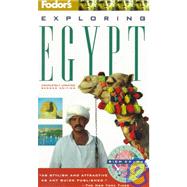
| Our Egypt, by Anthony Sattin and Sylvie Franquet Egypt Is | |
| Discusses aspects of life and living today, from politics and religion to Egyptians and the Nile River | |
| Gift of the Nile Politics Religion Religious Tension | |
| The Economy | |
| The Egyptians A Different View Etiquette | |
| The Arts Egypt Was | |
| Places the region in its historical context and explores those past events whose influences are felt to this day | |
| The Old Kingdom | |
| The Middle Kingdom | |
| The New Kingdom | |
| The Ptolemies Romans and Christians Under Arab Rule Fatimid and Ayyubid Mamluk and Ottoman Under Ottoman Rule Modernized Colonized Independent War and Peace Focus On | |
| The Pyramids Mosques City of the Dead Cafés The Egyptian Museum | |
| The Metro Europeans in Cairo Egyptian Food Egyptian Drinks Belly Dancing El-Faiyum Oasis Ancient Religion Akhenaton | |
| The Osiris Cult Temples Moulids SOS Egypt Tombs Tutankhamun Boats and Cruises | |
| The Aswan Dam Ancient Alexandria Café-patisseries Beaches Building the Canal | |
| The Red Sea Mountains Monasticism | |
| The Bedouin Scuba Diving | |
| The Desert Interior Rides A Desert Ride | |
| The West Bank Walks Cairo: Enclave of Devotion Cairo | |
| From the Citadel to Bab Zuwayla Cairo: To the Northern Gates Cairo | |
| Among 1,001 Shoe Stores Luxor | |
| Along the Corniche On Elephantine Island Siwa | |
| Through the Palm Groves Literary Alexandria Up Gebel Musa (Mount of Moses) | |
| Drives The Great Desert Circuit Rosetta | |
| In the Red Sea Mountains Boat Trips Felucca Trips Gazetteer | |
| This section is broken down into eight regional chapters and covers places to visit, including walks and drives | |
| Within this section fall the Focus-On articles, which consider a variety of topics in greater detail | |
| Cairo Lower Nile Valley Luxor Upper Egypt and Nubia Oases in the Western Desert Alexandria and the Delta Canal Zone and Red Sea Coast Sinai Travel Facts | |
| Contains the strictly practical information that is vital for a successful trip | |
| Arriving Essential Facts Getting Around Driving Communications Emergencies Other Information Tourist Offices Hotels and Restaurants | |
| Lists recommended establishments in Egypt, giving a brief résumé of what they offer | |
| Index | |
| Table of Contents provided by Publisher. All Rights Reserved. |
The New copy of this book will include any supplemental materials advertised. Please check the title of the book to determine if it should include any access cards, study guides, lab manuals, CDs, etc.
The Used, Rental and eBook copies of this book are not guaranteed to include any supplemental materials. Typically, only the book itself is included. This is true even if the title states it includes any access cards, study guides, lab manuals, CDs, etc.
Excerpted from Exploring Egypt by Fodor's Travel Publications, Inc. Staff
All rights reserved by the original copyright owners. Excerpts are provided for display purposes only and may not be reproduced, reprinted or distributed without the written permission of the publisher.